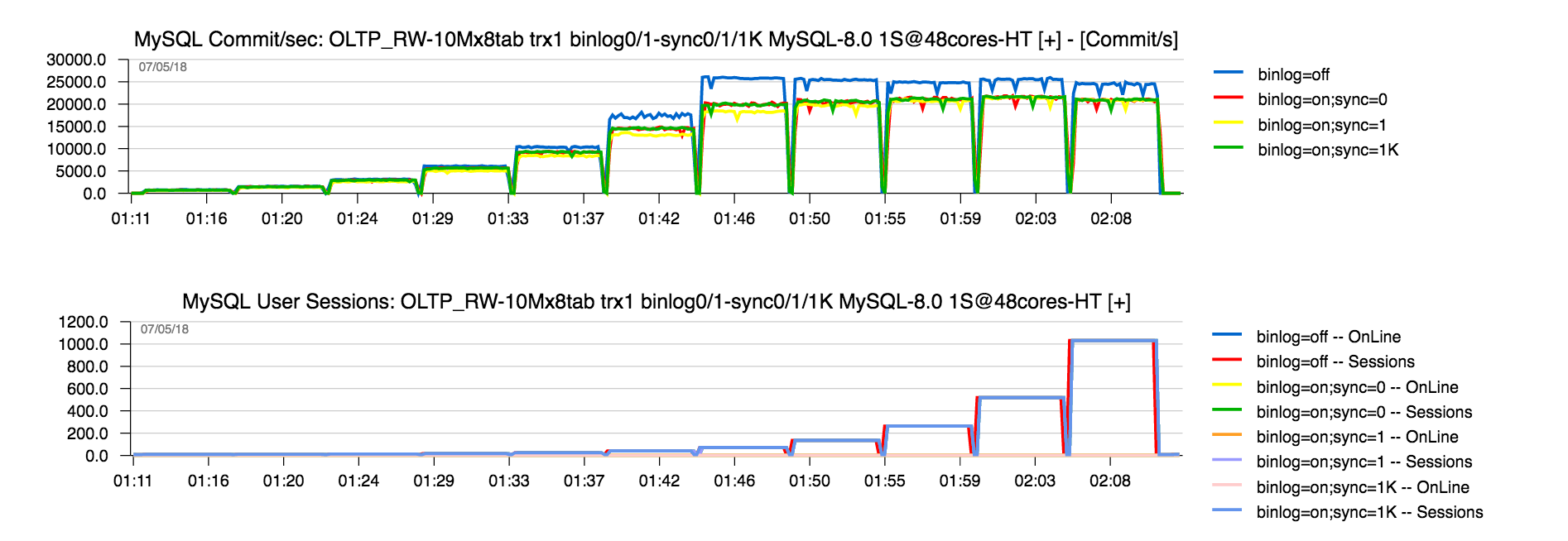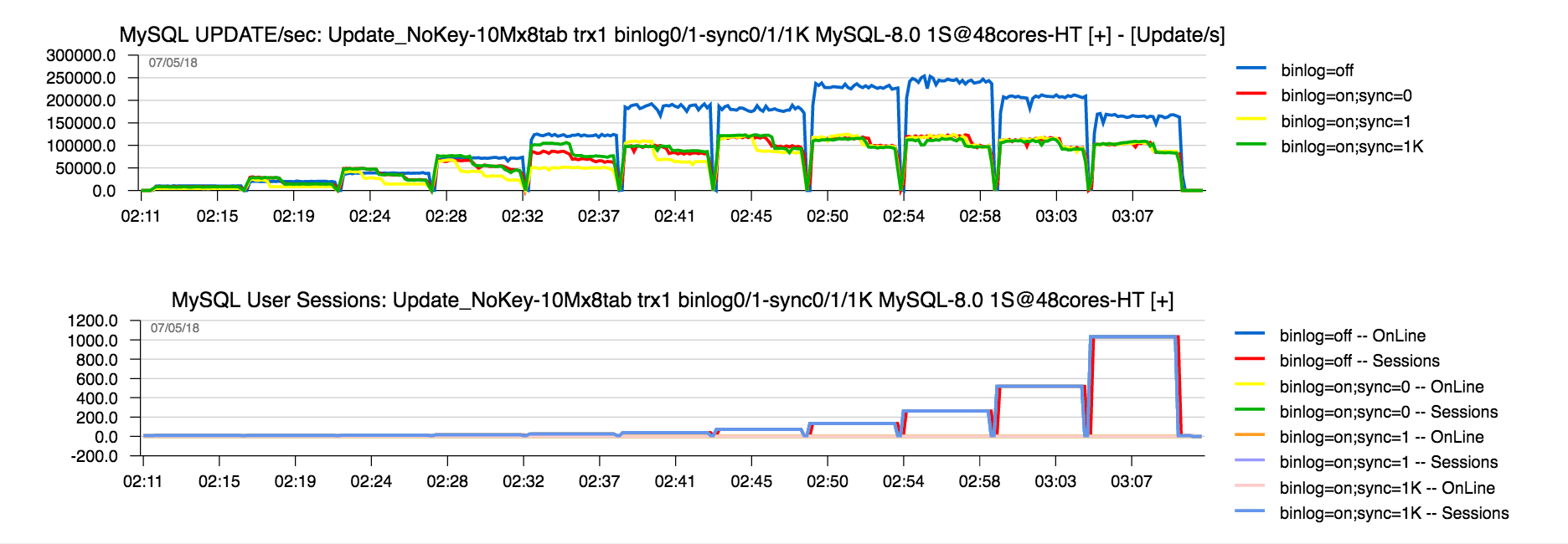In
the previous article I've intentionally skipped the topic related to
Binlog impact on MySQL 8.0 Performance, because it's not a short story, nor a simple one..
In fact, for most of people Binlog in MySQL is generally representing and additional overhead, and historically it was true. Since MySQL 5.6 there is Binlog Group Commit (BGC) feature available,
and it was rather doing well, decreasing the gap between "binlog=OFF" and "binlog=ON
sync_bin=1". However, storage vendors are making flash drives more and more better from year to year.. And when we delivered MySQL 5.7 the scope of Binlog impact moved with code and flash
improvements -- the main impact was no more coming from the I/O operations related to Binlog, but to the Binlog code itself ! -- indeed, this may sound odd initially, but let's go to "pictures" to
see it better in details ;-))
So far, I'll reuse the same Skylake server as before, but will reduce it to 1S (1CPU Socket, 24cores-HT) -- so, you don't believe it's all because I'm using a "big HW" (while 2S HW is the most
common server config in all data centers where people are running MySQL, and having 16-24cores per CPU Socket is what is todays "commodity HW") -- but well, let's stay with 24cores-HT for the
following experiment ;-)) And as the storage it'll be the same Optane drive with EXT4 filesystem.
I'll now replay the same Sysbench OLTP_RW and Update-NoKEY tests as before, but using only 1S (24cores-HT) and with the same my.conf but :
-
1) binlog=OFF
-
2) binlog=ON sync_bin=0
-
3) binlog=ON sync_bin=1000
-
4) binlog=ON sync_bin=1
and the results are here, each graph is representing a given test workload growing with number of concurrent user sessions from 1, 2, 4, .. to 1024 :
Sysbench OLTP_RW 10Mx8-tables @MySQL-5.7

Comments :
-
as you can see, on a higher load enabling Binlog is helping a higher TPS !
-
(well, in fact it's helping not to gain, but rather not to loose TPS on high load)
-
but in any case, you're seeing here a positive impact ! ;-))
-
and you can understand that in such a case it was difficult to blame Binlog code along MySQL 5.7 time ;-))
Specially that even more important "positive impact" happens on much more aggressive writes with Update-NoKey workload :
Sysbench Update-NoKey 10Mx8-tables @MySQL-5.7

Comments :
-
as you can see, enabling Binlog is helping a lot MySQL 5.7 to not loose performance on high load..
-
and this is all because it helps to "hide" the REDO log contention we have in 5.7
And it helped well, until we did not improve the whole REDO
log code in MySQL 8.0 ;-)) -- since then the same story is looking completely different now :
Sysbench OLTP_RW 10Mx8-tables @MySQL-8.0

Comments :
-
only negative impact from Binlog in MySQL 8.0
-
and 20K TPS instead of 25K TPS is a pretty huge difference..
Sysbench Update-NoKey 10Mx8-tables @MySQL-8.0

Comments :
-
but since the Writes are more aggressive in your workload, the impact then is even more dramatic..
-
more that x2 times TPS drop..
In case you're still suspecting the above is only valid for Skylake & Optane, here are the similar results from 1S Broadwell 22cores-HT and other vendor flash drive :
MySQL 5.7 :

MySQL 8.0 :

This is the reason why Binlog stuff in MySQL 8.0 must be fixed asap, and I really hope it'll happen soon ! -- seems like the whole story around Binlog must be re-visited and re-implemented..
BTW, if you have a patch, you're more than welcome ! ;-))
Rgds,
-Dimitri